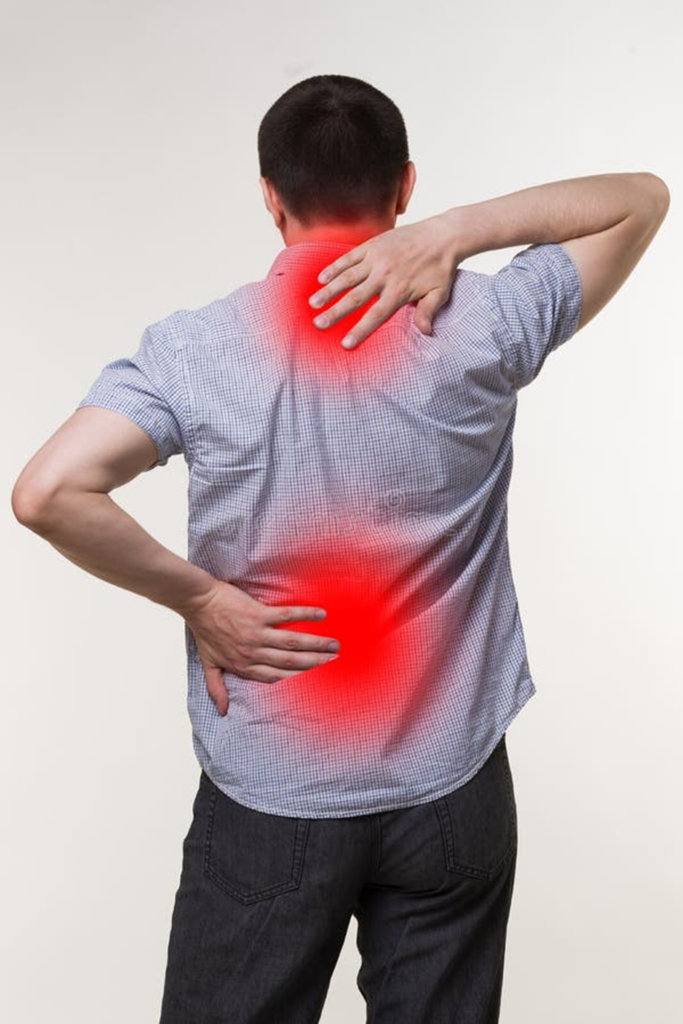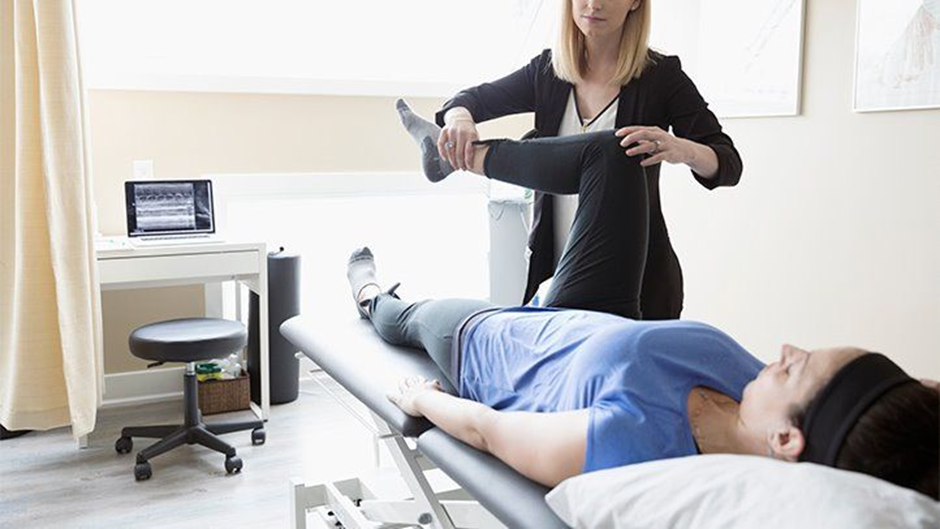Sciatica is a debilitating condition characterized by pain that radiates along the sciatic nerve, affecting the lower back, buttocks, and the back of the leg. The sciatic nerve is the longest nerve in the body, originating from the lower spine and extending down the leg. When this nerve is compressed or irritated, it can lead to various symptoms and discomfort, making it crucial to understand the causes, symptoms, and relief strategies associated with sciatica.
Causes of Sciatica
a. Herniated Discs
Herniated discs are a prevalent cause of sciatica. These discs act as cushions between vertebrae, providing flexibility to the spine. Over time or due to injury, the outer layer of a disc may rupture, causing the inner gel-like material to leak out. When this material presses on the sciatic nerve, it results in pain, tingling, and numbness.
b. Spinal Stenosis
Spinal stenosis refers to the narrowing of the spinal canal, typically due to age-related changes. As the spinal canal narrows, it puts pressure on the sciatic nerve, leading to pain and discomfort. This condition is common in older adults and can result in both lumbar and sciatic nerve compression.
c. Piriformis Syndrome
The piriformis muscle, located in the buttocks, plays a crucial role in hip rotation. In some cases, the sciatic nerve passes through or under the piriformis muscle, and if the muscle spasms or tightens, it can compress the nerve, causing sciatic pain. This is known as piriformis syndrome and often occurs due to muscle strain or injury.
d. Spondylolisthesis
Spondylolisthesis involves the displacement of a vertebra, often in the lower spine, causing it to shift forward or backward. This misalignment can irritate the sciatic nerve, leading to pain, weakness, and numbness in the affected leg.

Symptoms of Sciatica
a. Sharp or Burning Pain
Sciatic pain is often described as a sharp, shooting pain that radiates from the lower back down the leg. This pain can be intense and may worsen with movement, prolonged sitting, or coughing. Some individuals also experience a constant burning sensation along the nerve pathway.
b. Tingling and Numbness
Sciatica commonly causes tingling and numbness along the sciatic nerve pathway. These sensations may extend from the buttocks down to the toes, impacting daily activities and mobility. The tingling may be accompanied by a “pins and needles” feeling.
c. Weakness in the Leg
Muscle weakness in the leg is a frequent symptom of sciatica. The compression of the sciatic nerve can affect the muscles it innervates, leading to a loss of strength and coordination in the affected leg. This weakness may be particularly noticeable when walking or trying to stand on tiptoes.
d. Radiating Pain
Sciatic pain tends to radiate from the lower back to the buttocks and down the leg, following the path of the sciatic nerve. This radiating pain can vary in intensity and may be accompanied by other sensory disturbances like tingling or numbness.

Diagnosis of Sciatica
a. Medical History and Physical Examination
Healthcare professionals begin the diagnosis of sciatica by taking a detailed medical history, including the onset and nature of symptoms. A physical examination helps assess reflexes, muscle strength, and flexibility, providing valuable insights into the possible causes of sciatic pain.
b. Imaging Tests
Imaging tests such as X-rays, MRI, and CT scans are crucial in diagnosing the underlying causes of sciatica. X-rays reveal bone abnormalities, while MRI and CT scans provide detailed images of soft tissues, allowing healthcare providers to identify herniated discs, spinal stenosis, or other structural issues.
Relief Strategies for Sciatica
a. Conservative Treatments
Non-invasive approaches are often the first line of defense against sciatic pain. Physical therapy aims to improve flexibility and strengthen the core muscles to provide better support for the spine. Hot and cold therapy can help alleviate inflammation and provide temporary relief. Over-the-counter pain medications, such as nonsteroidal anti-inflammatory drugs (NSAIDs), may be recommended to manage pain and reduce inflammation.
b. Exercise and Stretching
Specific exercises and stretches can be beneficial in relieving sciatic pain. For example, gentle stretching of the hamstrings and piriformis muscle can help alleviate pressure on the sciatic nerve. Strengthening exercises for the core and lower back muscles play a vital role in preventing future episodes of sciatica.

c. Medications and Injections
In more severe cases, healthcare providers may prescribe medications such as muscle relaxants or corticosteroids to manage pain and inflammation. Epidural steroid injections directly target the affected nerve roots, providing relief by reducing inflammation and offering temporary pain relief.
d. Surgical Options
Surgery is generally considered when conservative treatments fail to provide relief, and the underlying cause of sciatica requires intervention. Surgical options may include discectomy to remove a herniated disc, laminectomy to address spinal stenosis, or other procedures depending on the specific diagnosis.
Prevention of Sciatica
a. Maintaining Good Posture
Good posture is crucial in preventing sciatica. Proper alignment reduces stress on the spine and minimizes the risk of disc herniation. Ergonomic considerations, such as using supportive chairs and desks, contribute to maintaining a healthy posture, especially during long periods of sitting.
b. Regular Exercise
Engaging in regular exercise helps strengthen the muscles that support the spine, reducing the likelihood of sciatic pain. Activities such as walking, swimming, and yoga contribute to overall spinal health and flexibility.
c. Proper Lifting Techniques
Adopting proper lifting techniques is essential in preventing back injuries that could lead to sciatica. Individuals should lift objects using their legs, keeping the back straight, and avoiding twisting movements, reducing the strain on the lower back.
Importance
- Improved Patient Awareness and Education:
- A comprehensive understanding of sciatica empowers individuals to recognize symptoms early, seek timely medical attention, and actively participate in their treatment plans. This can contribute to better patient outcomes and overall well-being.
Reference: Engel, G. L. (1977). The Need for a New Medical Model: A Challenge for Biomedicine. Science, 196(4286), 129-136. doi:10.1126/science.847460
- Enhanced Healthcare Provider-Patient Communication:
- Healthcare providers can communicate more effectively with patients when there is a shared understanding of sciatica. Informed patients are better equipped to discuss their symptoms, concerns, and treatment preferences, fostering a collaborative approach to healthcare.
Reference: Street, R. L., Makoul, G., Arora, N. K., & Epstein, R. M. (2009). How does communication heal? Pathways linking clinician-patient communication to health outcomes. Patient Education and Counseling, 74(3), 295–301. doi:10.1016/j.pec.2008.11.015
- Prevention and Lifestyle Modifications:
- Knowledge about the causes of sciatica enables individuals to adopt preventive measures, such as maintaining good posture, regular exercise, and proper lifting techniques. These lifestyle modifications can reduce the risk of developing sciatic pain.
Reference: Shiri, R., Falah-Hassani, K., Heliövaara, M., Solovieva, S., & Amiri, S. (2017). Lifting and carrying as risk factors for low back pain intensity among workers in a hospital. BMC Musculoskeletal Disorders, 18, 275. doi:10.1186/s12891-017-1633-1
- Informed Decision-Making Regarding Treatment Options:
- Knowledge about relief strategies for sciatica allows individuals and healthcare providers to make informed decisions regarding treatment options. This may include choosing between conservative approaches, medications, injections, or surgical interventions based on the severity and underlying cause of the condition.
Reference: Stacey, D., Légaré, F., Lewis, K., Barry, M. J., Bennett, C. L., Eden, K. B., … & Wu, J. H. (2017). Decision aids for people facing health treatment or screening decisions. The Cochrane Database of Systematic Reviews, 4(4), CD001431. doi:10.1002/14651858.CD001431.pub5
- Reduced Burden on Healthcare Systems:
- A well-informed population may experience reduced healthcare utilization for unnecessary or ineffective treatments. By promoting self-care and preventive measures, the burden on healthcare systems can be alleviated, allowing resources to be directed more efficiently.
Reference: Sackett, D. L., Rosenberg, W. M., Gray, J. A., Haynes, R. B., & Richardson, W. S. (1996). Evidence based medicine: What it is and what it isn’t. BMJ, 312(7023), 71–72. doi:10.1136/bmj.312.7023.71
Questions
What is sciatica?
Sciatica refers to the pain that radiates along the path of the sciatic nerve, usually affecting the lower back, buttocks, and the back of the leg.
What causes sciatica?
Sciatica can be caused by various factors, including herniated discs, spinal stenosis, piriformis syndrome, and spondylolisthesis.
How do herniated discs contribute to sciatica?
Herniated discs occur when the outer layer of a spinal disc ruptures, leading to compression of the sciatic nerve. This compression can cause pain, tingling, and numbness.
What is spinal stenosis, and how does it relate to sciatica?
Spinal stenosis involves the narrowing of the spinal canal, putting pressure on the sciatic nerve and causing pain. It is often associated with age-related changes in the spine.
Can piriformis syndrome cause sciatica?
Yes, piriformis syndrome occurs when the piriformis muscle in the buttocks compresses the sciatic nerve, leading to sciatic pain. This can result from muscle strain or injury.
Conclusion
In conclusion, sciatica is a complex condition with various causes and symptoms, ranging from sharp pain to weakness in the leg. Diagnosing sciatica involves a thorough medical history, physical examination, and imaging tests. Relief strategies encompass conservative treatments, exercise, medications, and surgical options, with an emphasis on prevention through good posture, regular exercise, and proper lifting techniques. Seeking professional advice is paramount for an accurate diagnosis and a tailored treatment plan, ultimately improving the overall quality of life for individuals dealing with sciatic pain.






